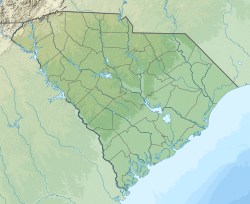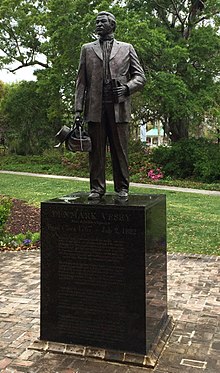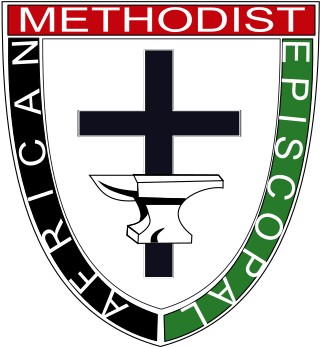
The African Methodist Episcopal Church, usually called the AME Church or AME, is a Methodist Black church. It adheres to Wesleyan-Arminian theology and has a connexional polity. The first independent Protestant denomination to be founded by Black people, AME welcomes and has members of all ethnicities.

Denmark Vesey was a free Black and community leader in Charleston, South Carolina, who was accused and convicted of planning a major slave revolt in 1822. Although the alleged plot was discovered before it could be realized, its potential scale stoked the fears of the antebellum planter class that led to increased restrictions on both enslaved and free African Americans.

The African Methodist Episcopal Zion Church, or the AME Zion Church (AMEZ) is a historically African-American Christian denomination based in the United States. It was officially formed in 1821 in New York City, but operated for a number of years before then. The African Methodist Episcopal Zion Church adheres to Wesleyan-Arminian theology.
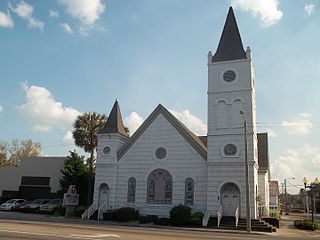
The black church is the faith and body of Christian denominations and congregations in the United States that predominantly minister to, and are also led by African Americans, as well as these churches' collective traditions and members. The term "black church" may also refer to individual congregations, including in traditionally white-led denominations.

Daniel Alexander Payne was an American bishop, educator, college administrator and author. A major shaper of the African Methodist Episcopal Church (AME), Payne stressed education and preparation of ministers and introduced more order in the church, becoming its sixth bishop and serving for more than four decades (1852–1893) as well as becoming one of the founders of Wilberforce University in Ohio in 1856. In 1863, the AME Church bought the college and chose Payne to lead it; he became the first African-American president of a college in the United States and served in that position until 1877.
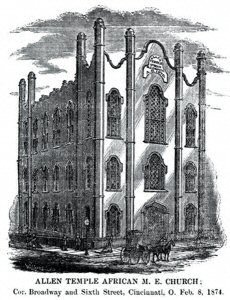
The Allen Temple AME Church in Cincinnati, Ohio, US, is the mother church of the Third Episcopal District of the African Methodist Episcopal Church. Founded in 1824, it is the oldest operating black church in Cincinnati and the largest church of the Third Episcopal District of the AME Church.
Jehu Jones Jr. (1786–1852) was a Lutheran minister who founded one of the first African-American Lutheran congregations in the United States, as well as actively involved in improving the social welfare of blacks.
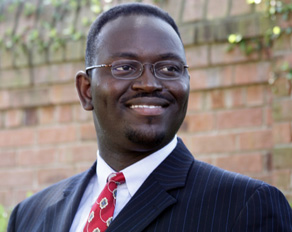
Clementa Carlos Pinckney was an American politician and pastor who served as a Democratic member of the South Carolina Senate, representing the 45th District from 2000 until his death in 2015. He was previously a member of the South Carolina House of Representatives from 1997 through 2000.

Bethel Methodist Church is a congregation and the building located at 57 Pitt St. The congregation organized in the late eighteenth century and originally built a smaller wooden church on the site. It served both white and black Methodists.

Old Bethel United Methodist Church is located at 222 Calhoun Street, Charleston, South Carolina. It is the oldest Methodist church still standing in the city.

The history of Charleston, South Carolina, is one of the longest and most diverse of any community in the United States, spanning hundreds of years of physical settlement beginning in 1670. Charleston was one of leading cities in the South from the colonial era to the Civil War in the 1860s. The city grew wealthy through the export of rice and, later, sea island cotton and it was the base for many wealthy merchants and landowners. Charleston was the capital of American slavery.

The Bethel A.M.E. Church, known in its early years as Indianapolis Station or the Vermont Street Church, is a historic African Methodist Episcopal Church in Indianapolis, Indiana. Organized in 1836, it is the city's oldest African-American congregation. The three-story church on West Vermont Street dates to 1869 and was added to the National Register in 1991. The surrounding neighborhood, once the heart of downtown Indianapolis's African American community, significantly changed with post-World War II urban development that included new hotels, apartments, office space, museums, and the Indiana University–Purdue University at Indianapolis campus. In 2016 the congregation sold their deteriorating church, which will be used in a future commercial development. The congregation built a new worship center at 6417 Zionsville Road in Pike Township, Marion County, Indiana.

The Charleston church shooting, also known as the Charleston church massacre, was an anti-black mass shooting and hate crime that occurred on June 17, 2015, in Charleston, South Carolina. Nine people were killed, and a tenth was injured, during a Bible study at the Emanuel African Methodist Episcopal Church, the oldest black church in the southern United States. Among the fatalities was the senior pastor, state senator Clementa C. Pinckney. All ten victims were African Americans. At the time, it was the deadliest mass shooting at a place of worship in U.S. history and is the deadliest mass shooting in South Carolina history.
Walker v. Texas Division, Sons of Confederate Veterans, 576 U.S. 200 (2015), was a United States Supreme Court case in which the Court held that license plates are government speech and are consequently more easily regulated/subjected to content restrictions than private speech under the First Amendment.

Dylann Storm Roof is an American white supremacist, Neo-Nazi, and mass murderer who is currently serving time on death row at USP Terre Haute for perpetrating the Charleston church shooting on June 17, 2015, in the U.S. state of South Carolina. During a Bible study at Emanuel African Methodist Episcopal Church, Roof killed nine people, all African Americans, including senior pastor and state senator Clementa C. Pinckney, and injured a tenth person. After several people identified Roof as the main suspect, he became the center of a manhunt that ended the morning after the shooting with his arrest in Shelby, North Carolina. He later confessed that he committed the shooting in hopes of igniting a race war. Roof's actions in Charleston have been widely described as domestic terrorism.
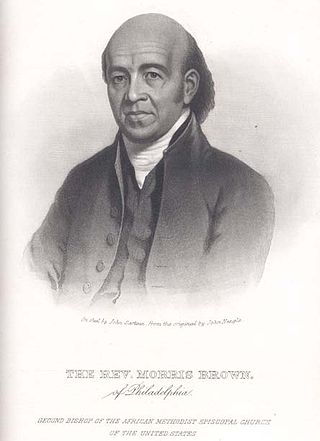
Morris Brown was one of the founders of the African Methodist Episcopal Church, and its second presiding bishop. He founded Emanuel AME Church in his native Charleston, South Carolina. It was implicated in the slave uprising planned by Denmark Vesey, also of this church, and after that was suppressed, Brown was imprisoned for nearly a year. He was never convicted of a crime.

Emanuel is a 2019 documentary film directed by Brian Tetsuro Ivie about the Charleston church shooting that killed nine Emanuel AME church members in an act of terror. Stephen Curry and Viola Davis are executive producers; Mariska Hargitay is a co-producer. Emanuel first received critical acclaim at the 2018 Geena Davis’ Bentonville Film Festival, where it won the Jury Prize for Best Documentary. The film also won the Heartland International Film Festival audience choice award. Emanuel’s limited theatrical release opened June 17, 2019—exactly four years after the shootings.

The Denmark Vesey Monument is a monumental statue in Charleston, South Carolina, United States. The monument was erected in 2014 in Hampton Park and honors Denmark Vesey, a freedman who lived in Charleston and was executed in 1822 for plotting a slave revolt. It was designed by American sculptor Ed Dwight.

St. John's Reformed Episcopal Church is a historic African-American Anglican church in Charleston, South Carolina. Founded in 1906 and occupying a building built in 1850, the church is a member of the Reformed Episcopal Church's Diocese of the Southeast.

